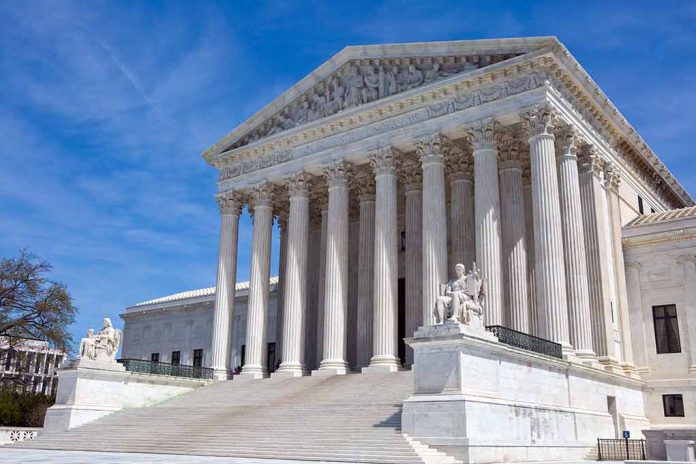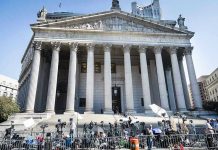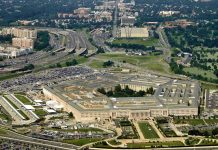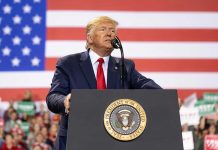
Justice Samuel Alito voiced shock as the Supreme Court ruled 5-4 that the Trump administration must release $2 billion in foreign aid despite presidential policy directives, raising serious questions about judicial boundaries and constitutional separation of powers.
Key Takeaways
- The Supreme Court ruled 5-4 that the Trump administration must disburse nearly $2 billion in foreign aid, overruling the administration’s temporary funding freeze.
- Justice Samuel Alito, joined by Justices Thomas, Gorsuch, and Kavanaugh, issued a dissent questioning whether a single district court judge should have power to compel billions in government spending.
- The case stemmed from a directive by U.S. District Judge Amir Ali, who gave the administration just one day to resume payments after nonprofit organizations filed suit.
- Alito expressed concern that once disbursed, the government would likely be unable to recover the funds, imposing a permanent financial burden on taxpayers.
- The ruling has sparked debate about judicial overreach and separation of powers between the executive and judicial branches.
Supreme Court’s Controversial 5-4 Decision
In a significant ruling that has created sharp divisions within the Supreme Court, a narrow majority has declined to block a lower court order requiring the Trump administration to release approximately $2 billion in foreign aid payments. Chief Justice John Roberts had temporarily paused the order, but ultimately joined Justices Barrett and the court’s liberal wing to form the 5-4 majority. The decision upholds District Judge Amir Ali’s original mandate that the administration honor foreign aid agreements made prior to President Trump’s directive to freeze such funding for review.
The case originated when various nonprofit organizations sued the Trump administration over its implementation of a 90-day freeze on foreign aid funding. Judge Ali responded by issuing a temporary restraining order against the freeze, giving the administration just one day to resume payments. When the government sought relief from this timeline, arguing it disrupted the orderly review process, the judge issued a compliance order mandating immediate disbursement of funds.
BREAKING: The Supreme Court has ruled that President Trump must unfreeze $1.9 billion in foreign USAID payments. Unbelievable.
Justice Samuel Alito BLASTS the majority with Justices Thomas, Gorsuch, and Kavanaugh joining in dissent:
"Does a single district-court judge who… pic.twitter.com/mt8eL4yj7L
— Charlie Kirk (@charliekirk11) March 5, 2025
Alito’s Forceful Dissent
Justice Samuel Alito’s dissent, joined by Justices Clarence Thomas, Neil Gorsuch, and Brett Kavanaugh, pulled no punches in criticizing what they viewed as judicial overreach. The dissenting justices argued that the majority failed to address a clear case of “judicial hubris” where a single district court judge exercised extraordinary power over billions in taxpayer dollars. Alito’s language in the dissent revealed his profound concern about the constitutional implications of the decision.
At the heart of Alito’s dissent was a fundamental question about judicial authority: “Does a single district-court judge who likely lacks jurisdiction have the unchecked power to compel the Government of the United States to pay out (and probably lose forever) 2 billion taxpayer dollars?” His clear implication was that such power exceeds proper judicial boundaries and encroaches on executive authority under Article II of the Constitution, which grants the president significant discretion in foreign affairs.
Practical and Constitutional Implications
The Trump administration had argued that the district court’s order severely disrupted the government’s ability to conduct an orderly review of foreign aid spending. Justice Alito further emphasized in his dissent that the government would suffer irreparable harm from the decision, as it would likely be unable to recover the funds once disbursed to foreign entities. This creates a permanent financial obligation for American taxpayers without proper executive branch review of the expenditures.
While the plaintiffs celebrated the ruling as a victory for the rule of law, with attorney Lauren Bateman praising the decision, critics view it as potentially undermining constitutional separation of powers. The Supreme Court’s ruling does not specify precisely when the funds must be released, but instructs the district court to clarify compliance obligations. This decision allows Judge Ali to potentially impose a longer-term injunction against the aid freeze, further limiting executive discretion in foreign policy matters.
Broader Constitutional Questions
The case raises fundamental questions about the judiciary’s role in executive branch decision-making, particularly in areas traditionally left to presidential discretion like foreign affairs. Critics argue that allowing a single district judge to mandate multi-billion dollar expenditures without rigorous jurisdictional analysis sets a concerning precedent. The dissenting justices clearly viewed the majority’s failure to address these concerns as a missed opportunity to clarify proper boundaries between branches of government.
This ruling may have significant implications for future presidential authority in both domestic and foreign policy initiatives. With Justice Alito characterizing the decision as a “misstep” that imposes an unreasonable financial burden on taxpayers, the case highlights ongoing tensions within the Court about judicial restraint and the proper scope of district court authority when reviewing executive actions.
Sources:
Justice Alito Slams Majority for Failing to Rein in ‘Judicial Hubris’ Against Trump Admin
US Supreme Court won’t let Trump withhold payment to foreign aid groups
Alito says he’s ‘stunned’ the Supreme Court ruled against Trump over USAID’s funding













